Oz the Great and Powerful
Itís always a risky move when a
beloved franchise is expanded upon through the addition of a prequel to
the canon. Movies like The Thing, Dumb and Dumberer and
the much maligned Star Wars prequels are prime examples (Although
I personally didnít exactly hate The Thing prequel, I seem to be
in the minority) but occasionally the odd gem like Rise of The Planet
of the Apes slips through and bucks the trend. Like the
aforementioned Apes prequel, Oz the Great and Powerful stars
James Franco and attempts to explain the sequence of events that
eventually lead into the classic film, but does it do the original
justice or is it a superfluous addition to a franchise held in high
regard?
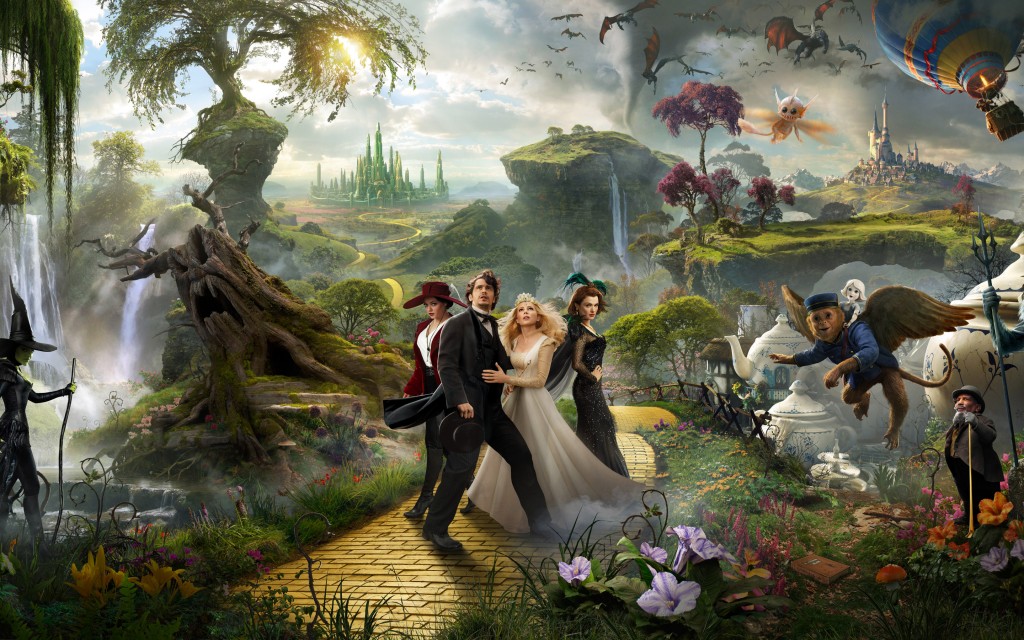
An original story instead of being
directly sourced from the works of L. Frank Baum, Oz the Great and
Powerful opens in 1905 with womanising magician Oscar Diggs (Franco)
eking out a meagre existence performing with a travelling circus as Oz
the Great and Powerful and taking advantage of any opportunity that
comes his way. With his promiscuous ways coming back to bite him on the
behind, Oscar is forced to flee from an irate strongman and take to the
skies in a hot air balloon; unfortunately he chooses to do this just as
a twister tears through Kansas, sucking him up and spitting him out in a
strange and magical land that bears his stage name.
Assumed to be the prophesised saviour
who will rescue Oz from the nefarious clutches of the Wicked Witch,
Oscar finds himself hailed as a hero and entitled to a bounty of
riches... On one condition: That he find the witch and break her wand,
which by proxy will destroy her. Theodora (Mila Kunis), the youngest and
naive of the three witches, is convinced that Oscarís sleight of hand
and parlour tricks proves that he is the true Wizard; her older sister
Evanora (Rachel Weisz) isnít as easily deceived, however, and demands
that he proves himself.

Accompanied by Finley (Zach Braff), a
flying monkey who owes Oscar a life debt for rescuing him from a lion,
and a literal China Girl (Joey King), Oscar journeys to the dark forest
to vanquish the witch (Michelle Williams), only to find that things
arenít as they initially seem and although he may not be exactly the
wizard that Oz was expecting, he may very well be the saviour Oz needs.
Visually Oz the Great and Powerful
is a stunningly gorgeous film; some criticism has been levelled at the
perceived overly-animated quality of the Land of Oz itself, but
personally I felt that it emphasised the fantastic quality of this
mystical land. Sure, certain sections can look overly glossy and dated,
but when one remembers that the film was made to be viewed in 3D this
can be excused somewhat. It could be argued that, much like the Star
Wars prequels, the practical effects in the original were more
effective in conveying a realistic world, but again, I personally found
myself too absorbed in the film to really dwell on the issue.
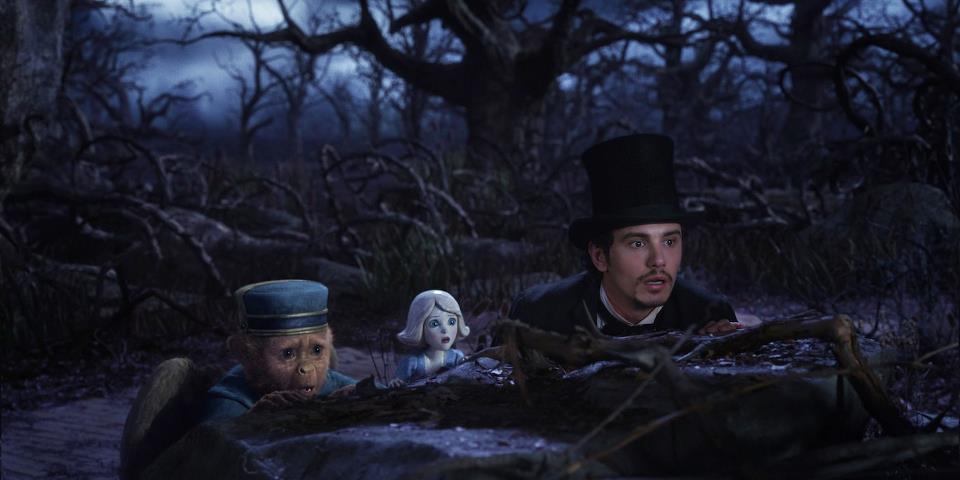
One major issue I did have
with the film was Sam Raimiís staid direction; lacking the visual flair
expected from the man who brought us The Evil Dead trilogy, it appears
as if his hands were tied somewhat by working under the watchful gaze of
The Mouse House. Thatís not to say that the direction is bad, per se,
itís just not instantly identifiable as a Raimi film.
Speaking of Raimi films, the closest
analogue to Oz the Great and Powerful isnít the beloved MGM
original but Raimiís own Army of Darkness: A stranger in a
strange land is mistaken for the hero of prophecy and is tasked with
ridding the land of a pervasive evil. Despite their seeming ineptitude,
they use elements of technology from their own world in order to combat
magic and eventually reign victorious.
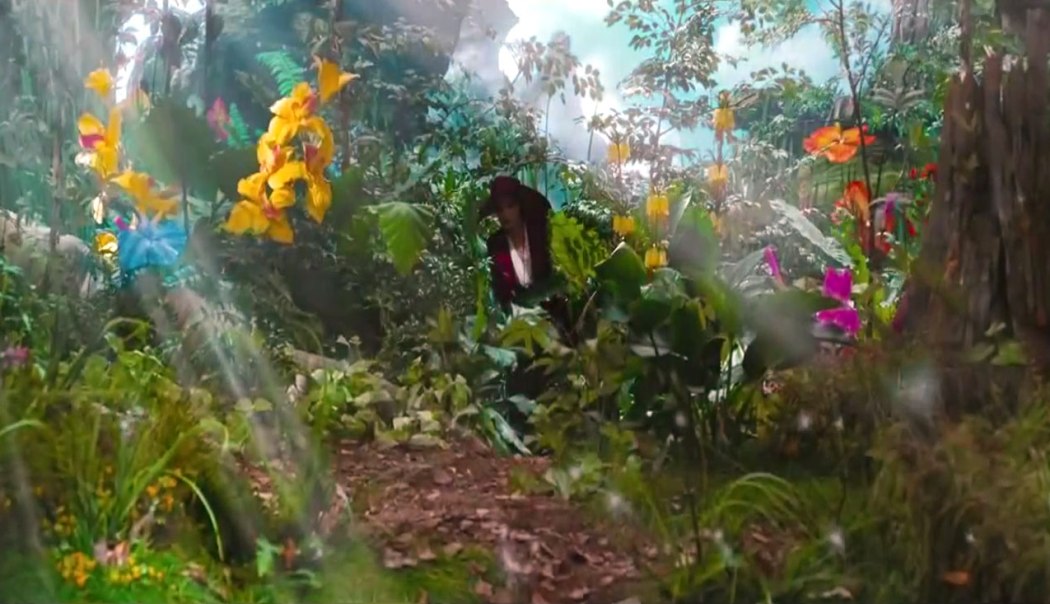
The script is chock-a-block with
subtle nods towards The Wizard of Oz and is well crafted with
engaging subplots and clever explanations for aspects of that film that
seem anachronistic by todayís standards. The dialogue is rather weak,
however, and a certain suspension of disbelief is necessary to overlook
some minor plot holes, but for the most part I think the film succeeds
in replicating that youthful wide eyed wonder with which I viewed the
original film.
Another nice touch is the decision to
open the first twenty minutes of the film in letterboxed black and
white, a not so subtle nod to the original that serves to enhance
Oscarís eventual arrival in the magical world of Oz, although sticklers
may bemoan the fact that itís not presented in sepia tone. The film is
clearly built for the 3D format, so itís inevitable that the 2D version
feels slightly flat in comparison, but the whimsical nature of the film
shines through these flaws to present an enjoyable return to a much
loved franchise.
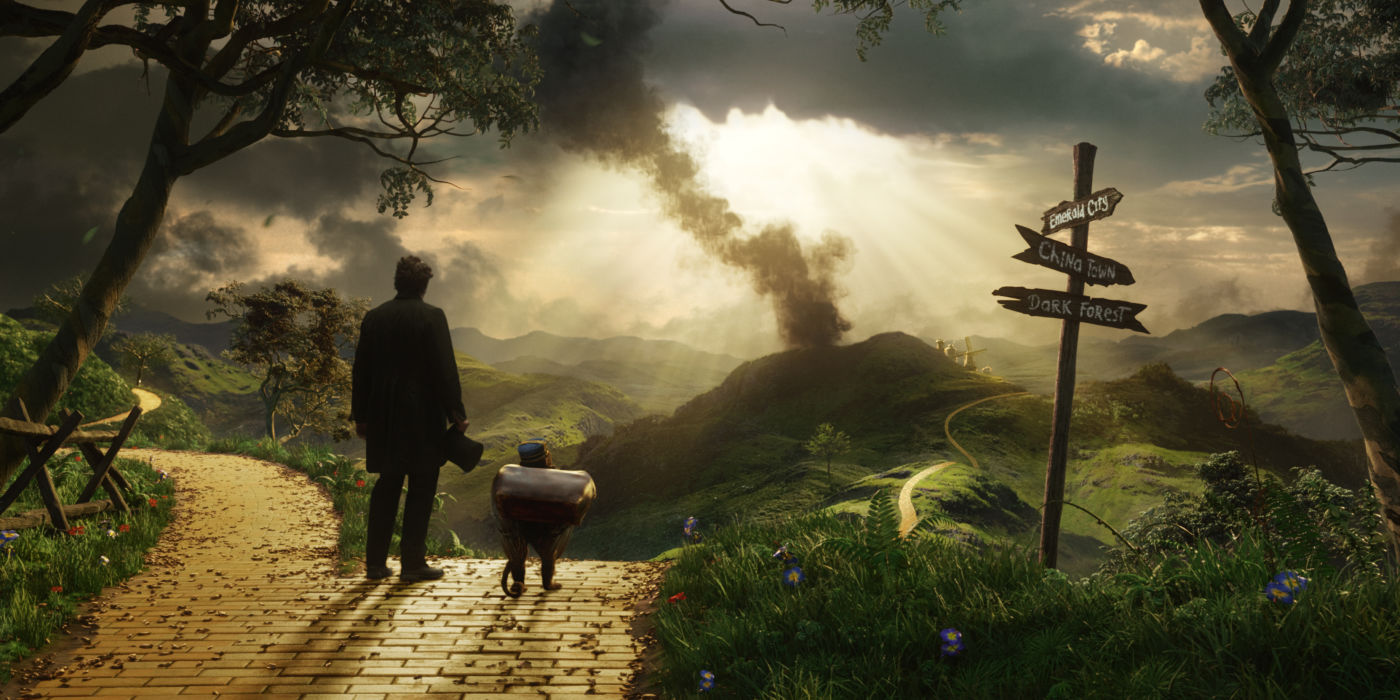
Special Features
Oz the Great and Powerful comes to DVD with a
selection of bloopers, which are exactly as one would expect, and a
rather interesting documentary covering Disneyís attempted acquisition
of The Wizard of Oz rights way back in the 30ís and other failed
attempts to bring the world of Oz back to our screens throughout the
years. I could have done with a bit more focus on the film itself, but
for the often short changed DVD market, Iím just thankful to have any
extra features of worth included at all.
List of Features
-
Bloopers (4:54)
-
Walt Disney and the Road
to Oz (9:58)
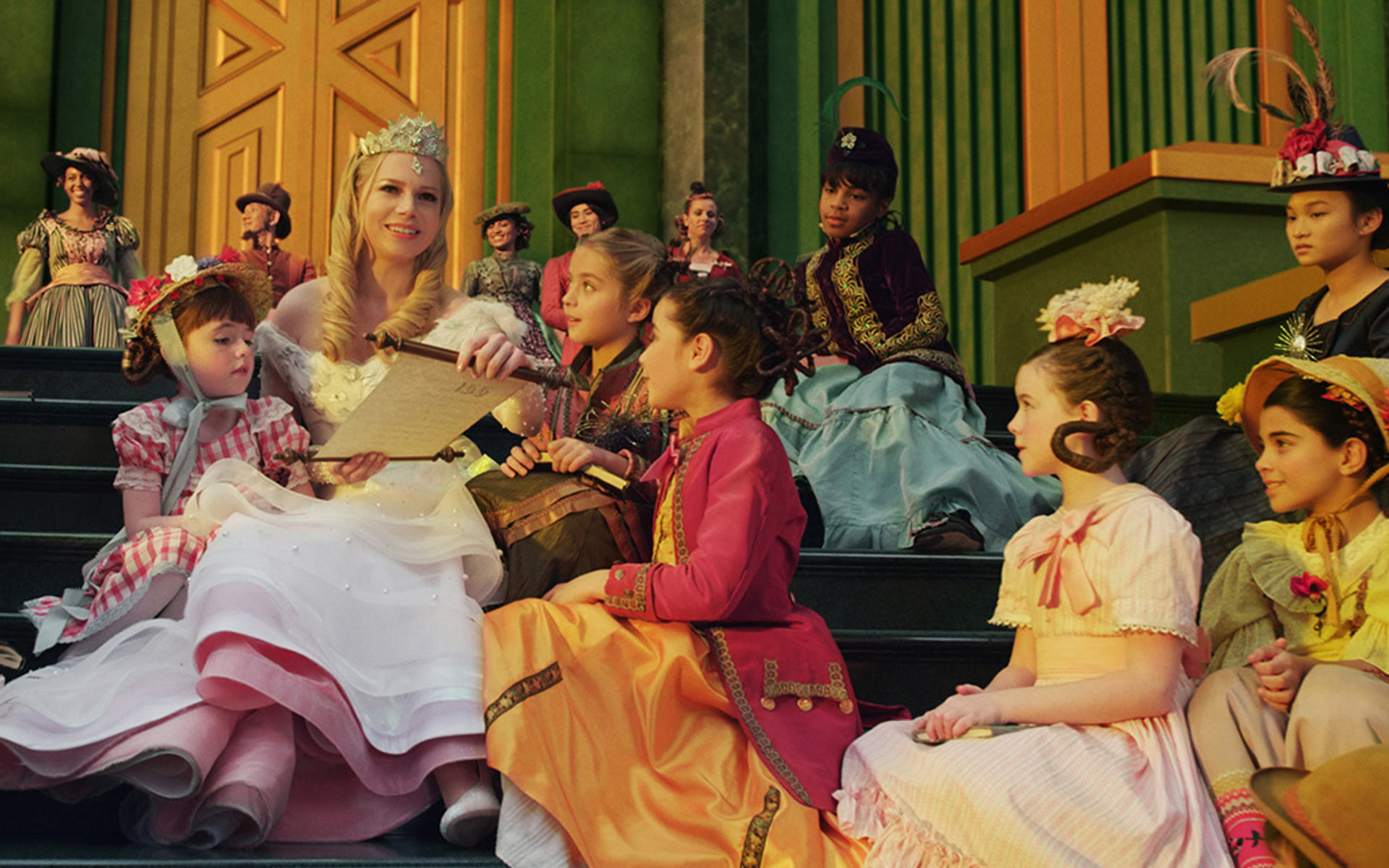
Final Thought
Although itís a bit unfair to judge
Oz the Great and Powerful against the truly classic The Wizard
of Oz, such comparisons are unfortunately inevitable and the film
falls short of reaching the lofty heights set by that film. However,
when judged on its own merits, Oz the Great and Powerful is an
enjoyable sojourn back to the land of Oz, where Crystal flowers bloom
and entire armies of cult hero Bruce Campbell are a reality. I may be
out of step with a majority of other reviewers, possibly because I
viewed the film with two enamoured youngsters, but I found the film to
be a commanding addition to the franchise and, with the ending setting
up a potential sequel, look forward to further exploring the history of
Oz.
A slightly better film than the dark
and surreal Return to Oz, Oz the Great and Powerful serves
as a great introduction to L. Frank Baumís unique creation and is a
worthy companion piece to the original film.